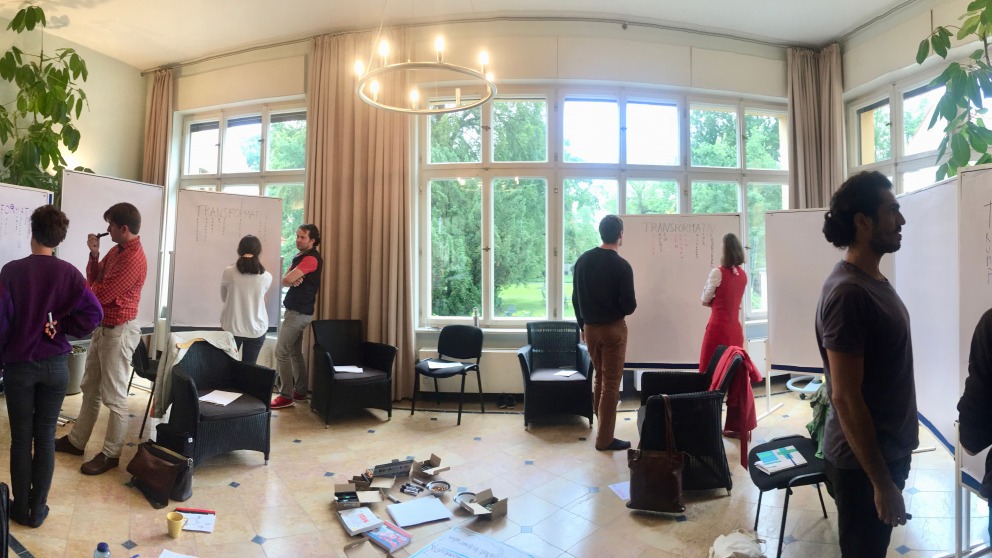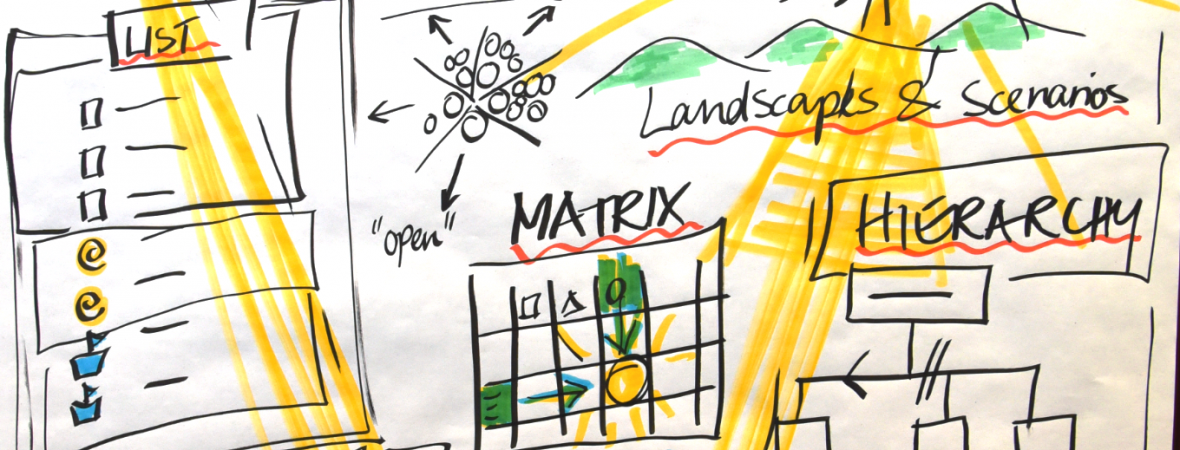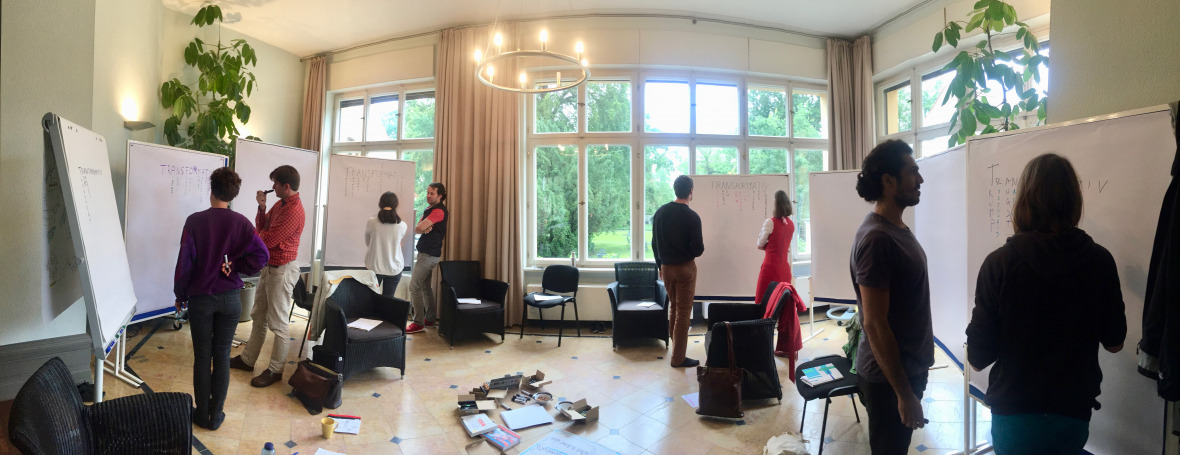Headline:
Visual scribing meets science

What happens when visual scribing meets science? What happens when the world of images meets the world of words? IASS researchers are currently grappling with these questions. Sabine Soeder, a graphic facilitator and the founder of CoCreativeFlow, has been invited to join the institute as a fellow in the research project “Co-Creation and Contemporary Policy Advice”, which explores the application and integration of co-creative practices in the field of policy-advice and policymaking.
Visual scribing, which supports co-creative processes through the use of imagery, is among the practices that will be examined in the course of this project. Its potential was recognised by actors in the private and public sectors in Europe over a decade ago, however the practice of visual scribing is yet to be embraced on a broad scale in academia. This gives rise to at least two questions: Can visuals support researchers in their work? And, how can their simplicity and immediacy be placed in the service of complex research processes?
Visuals help researchers to think through complexity
One visual scribing practice that is starting to become more common at academic conferences is graphic recording, which seeks to capture and communicate the main points of presentations and discussions in imagery. Among the greatest challenges faced by researchers is the task of distilling into compact form the results of research processes that often span several years. Visuals can play an important part in achieving this. But they also possess a broader potential for science, beyond supporting documentation processes at conferences. They can help researchers to think through complexity. Images can tell us things that we cannot see or hear.

With the aid of Sabine Soeder, we are currently looking into this potential from a specific perspective: What if scientists were to use visuals, and integrate them in their work? What if science itself were to adopt a visual language? Every two months, researchers at the institute gather for a “Research and Draw” session, guided by Sabine. The motivations voiced by the participants are quite diverse: “How can we transform complex concepts into something understandable to a broader public?” “How can visuals help us to exchange ideas with other stakeholders?” “How can I visually structure my own thinking?”

“It’s not about beautiful images”
Following a learning-by-doing approach, the researchers soon find themselves in front of an empty flipchart, ready to draw visualisations of research-related terms or concepts after some input on the use of various techniques. “It is not about beautiful images” – Sabine underlines every time – “it’s about using images to support a process of producing meaning”. In one of the last sessions, participants were invited to draw their own research project. In particular, they were asked to visualise its knowns and unknowns, creating a quick-and-dirty form of research design.
Instead of writing a literature review, people started visualising and connecting images and keywords. In the end, they showed their results to a colleague who was new to that specific project. “I learned 200% more in this way than I would just by hearing words”, was one reaction at the end of the session. Visualising the core dimensions of a project can also help researchers to identify gaps or to see issues that were previously not apparent: “I started the exercise by drawing fish to represent the individual behaviours that are currently the focus of our investigation. After a while, however, I realised that something fundamental was missing in the research design: the river or surrounding structure in which the fish are swimming!”

Concrete metaphors for abstract concepts
When visuals meet science, we are gently forced to shift our thinking process. We go back to a practice that, for many of us, filled entire days of our childhood. We access another sphere of creativity. We are encouraged to address the essence of the issue that we want to investigate, to commit our thoughts to paper, and to move beyond theoretical concepts. Abstract concepts thus find concrete metaphors. In an institute where interdisciplinary teamwork is a daily practice, visuals can render visible our assumptions and enhance communication. They can help us to stay on the same page as a team. Last but not least, they facilitate the collaborative generation of collective ideas.
Visuals cannot and should not replace other fundamental research techniques and methods. Still, they can play a fundamental role in different phases of the research process, from gaining clarity on our research question to discussing its results with other stakeholders. They literally show us the big picture, allow us to establish connections among different topics we had not seen before, and invite us to dive deeper into issues that we have not questioned sufficiently. Simplicity thus gives us access to complexity from a different perspective and activates new modes of thinking. The next IASS “Research and Draw” sessions will offer new food for thought to inquire deeper into the synergies between science and visual scribing.
Header Image: Sabine Soeder
